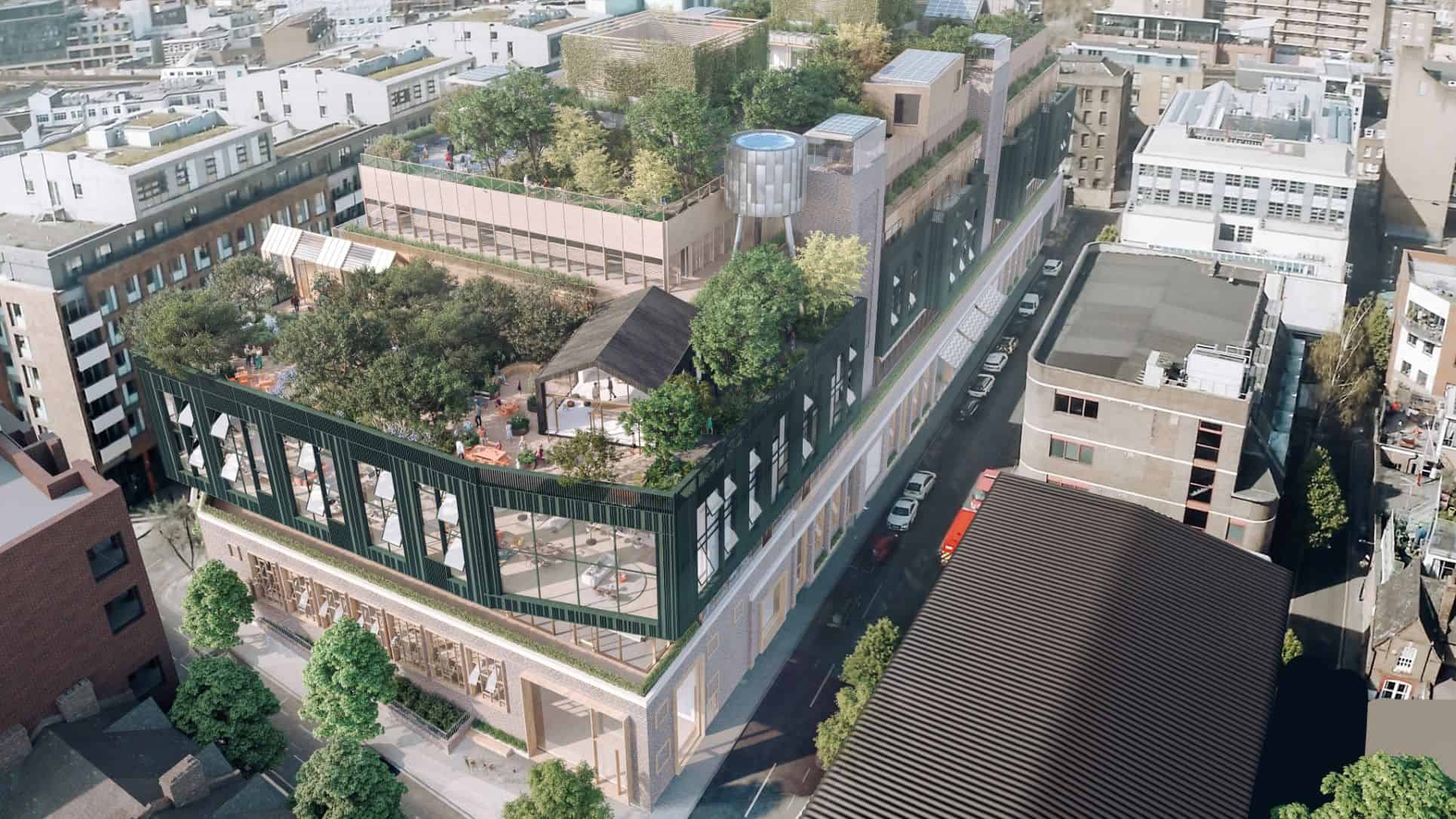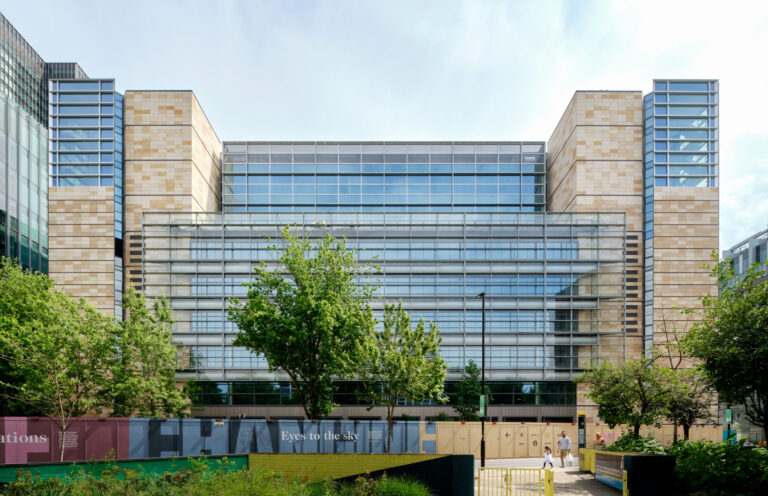Roots in the Sky
Urban greening in the heart of London - a next-gen workspace with an urban forest rooftop, creating a contemporary, sustainable office space.

Key Sustainability Objectives/ Outcomes
Climate change:
- Overall project: 767kgCo2/m2 upfront (A1-A5) or 1,266kgco2/m2 whole life (A-C excluding B6&B7).
Resource use:
- The project reuses 30 tonnes of steel from 1 Broadgate, a British Land project, which could lower the carbon impact of the incorporated steel element by 80% when compared to virgin steel. Incorporation of 30 tonnes into the main structure is estimated to save around 74tonnes of CO2e compared to using new steel members produced in standard steelmaking facilities (BOF). (1b)*
- Steel recovered from the existing Blackfriars Crown Court structure will also be reused for temporary works propping up. The amount of existing steel used as propping up will be determined once the basement box contractor is onboard. (1b)*
- A demolition audit has also been undertaken to assess all materials that can be reclaimed and repurposed from the existing buildings. A requirement to reuse or recover at least 95% of all construction waste has been established. The carbon impact of demolishing the existing building is estimated at around 730tonnes of CO2e. This will be monitored by the demolition contractor. (1b)*
- Bolted structural connections will be prioritised over welded connections where this is structurally and technically feasible. This will allow primary steel material to be re-used in future developments. Assuming 50% recovery rate, this measure has the potential to save around 3,500tonnes of CO2e on future developments. (2d)*
- Hollowcore planks were specified to provide a low carbon structural solution that can be reclaimed at the end of life of the project (min. 60-year design life). In particular, the hollow core slabs, steel structural elements and facade subcomponents are expected to lend themselves well to off-site manufacturing for on-site assembly. (2d)*
- In addition, the project will utilise reclaimed raised access flooring for service distribution. With small and standardised tile sizes, this system enables easy removal and replacement of the floor finish system exposed to high wear and tear. This system also enables easy access to the services laid out in the floor void for maintenance without damaging their cover. (2d)*
- All concrete will be specified with maximum acceptable amounts of cement replacements with all rebar UK Cares certified to ensure it is close to 96% recycled – this offers a 7,000tonnes of CO2e saving when compared to rebar without any recycled content. (5d)*
Nature and biodiversity:
- 23% canopy cover on the roof due to London’s largest urban forest.
Notable Approaches And Solutions
The reused steels from the 1 Broadgate site were marginally cheaper than new to procure. The steel costs itself were marginally cheaper than new but there are associated costs associated with storage, testing and recertification, which is being undertaken by Cleveland Steel and Tubes. Fabrix believes the reused steel will add greater value to the building for an occupier or if sold where environmental credentials will become just as important as financial cost.
Lessons Learnt
- Much of this is untested in respect of procurement. The re-used steel is required to be deconstructed, stored, tested and recertified, and building design needs to consider the existing steel dimensions. Some of the products specified in our projects are single source. The timing of demolition of existing developments needs to align with the construction of new ones and there is no central register for this process, so the market is very illiquid.
- In terms of steel procurement, the project is looking to procure the remaining steel deriving from recycled sources and produced on electric arc furnaces that are powered by renewable energy. This introduces a significant risk into the supply chain which will need to be overcome by careful sourcing of primary material and potentially placing orders well in advance.
- Additionally, re-using steel requires the demolition of existing buildings. In some cases, demolition of the existing building is not warranted and those buildings could be retrofitted instead. Therefore, steel for re-use should be targeted only when a demolition is really required, and it should be reused as locally as possible to reduce emissions from transport.
Related members
Related
1 Triton Square
Office refurbishment focusing on the circular economy - maximising the retainment and reuse of materials.

11-21 Canal Reach – Meta Office
Two commercial office buildings under construction in Central London, including an embodied carbon reduction target.

JLL – Manchester office fit-out
Embodied carbon savings and cost reduction through the application of circular principles in an office fit-out.

55 Great Suffolk Street
The revitalization and refurbishment of a historic London warehouse to deliver sustainable, characterful, and future-fit spaces.


